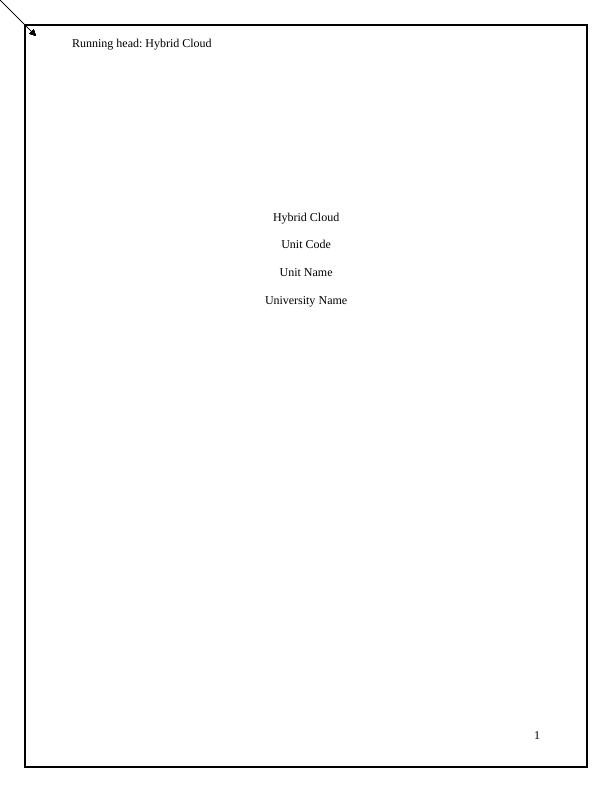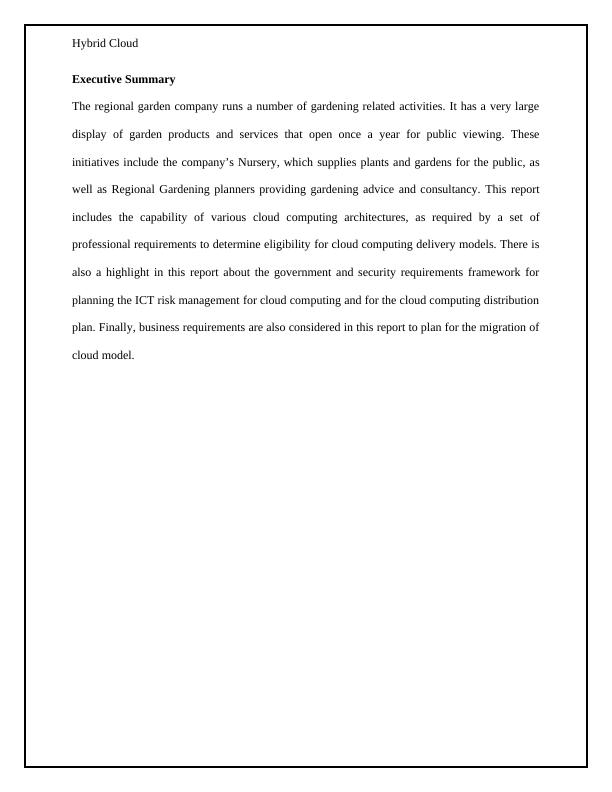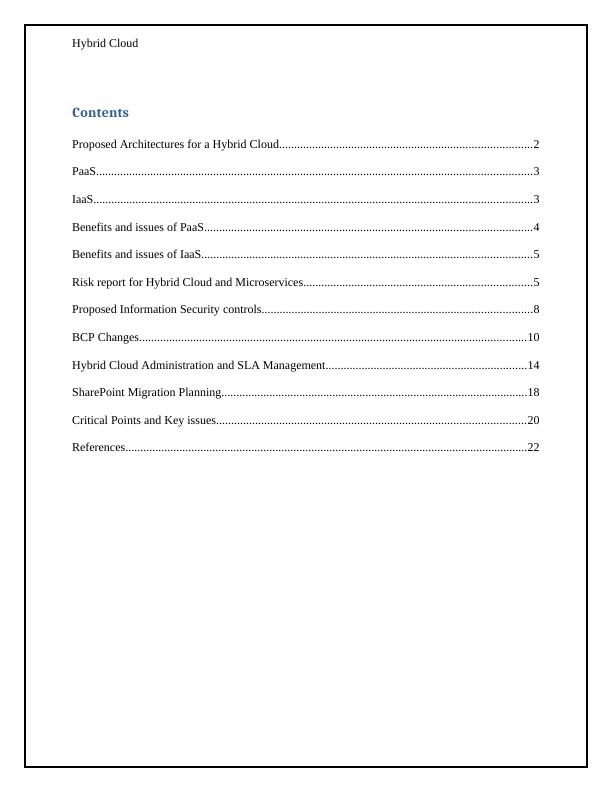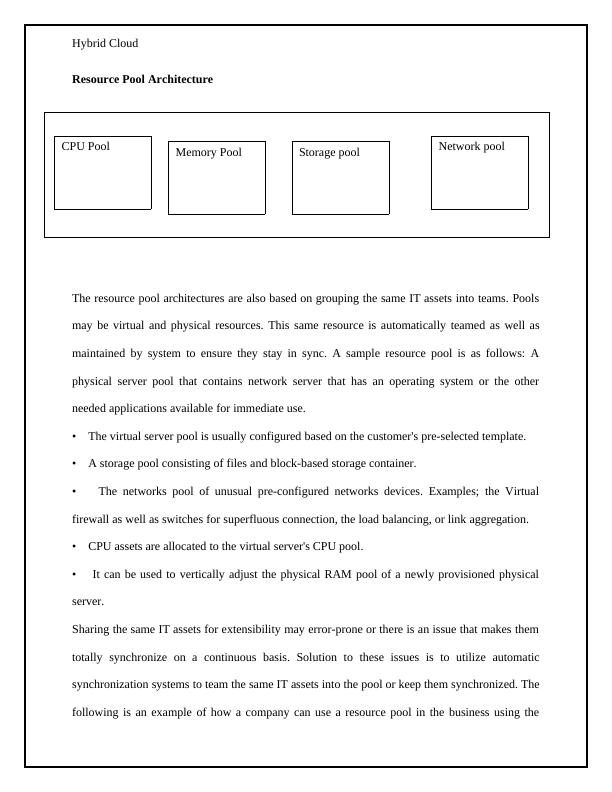The Regional Garden Company
Added on 2021-06-17
30 Pages7288 Words345 Views
Running head: Hybrid CloudHybrid CloudUnit CodeUnit NameUniversity Name1

Hybrid CloudExecutive SummaryThe regional garden company runs a number of gardening related activities. It has a very largedisplay of garden products and services that open once a year for public viewing. Theseinitiatives include the company’s Nursery, which supplies plants and gardens for the public, aswell as Regional Gardening planners providing gardening advice and consultancy. This reportincludes the capability of various cloud computing architectures, as required by a set ofprofessional requirements to determine eligibility for cloud computing delivery models. There isalso a highlight in this report about the government and security requirements framework forplanning the ICT risk management for cloud computing and for the cloud computing distributionplan. Finally, business requirements are also considered in this report to plan for the migration ofcloud model.

Hybrid CloudContentsProposed Architectures for a Hybrid Cloud....................................................................................2PaaS.................................................................................................................................................3IaaS..................................................................................................................................................3Benefits and issues of PaaS.............................................................................................................4Benefits and issues of IaaS..............................................................................................................5Risk report for Hybrid Cloud and Microservices............................................................................5Proposed Information Security controls..........................................................................................8BCP Changes.................................................................................................................................10Hybrid Cloud Administration and SLA Management...................................................................14SharePoint Migration Planning......................................................................................................18Critical Points and Key issues.......................................................................................................20References......................................................................................................................................22

Hybrid CloudProposed Architectures for a Hybrid CloudWorkload Distribution Architecture Load balancerCloud servicecustomersCloud serviceACloudservice AVirtual serverAVirtual serverA

Hybrid CloudWorkload Distribution & Resource Pooling ArchitecturesThe Cloud architects should implement some concepts or best practice to create extremelyscalable applications. This concept is very critical because of continuous expansions of data sets,unpredictable traffic pattern, as well as the need for earlier response time. The 2 common basiccloud planning models are workload distribution architecture moreover resource poolarchitecture.Workload distributional architectureThe workload distribution architectures use information technology assets that may scale out byusing one or more of the same IT resource. This is accomplished using load balancers thatprovide run-time logic that evenly distributes workload between available informationtechnology resources. These models may be apply to several IT assets as well as is usuallyutilized with it; the distributed effective server, the cloud storage gadgets furthermore cloudservice. Additionally to the load balancer or the aforementioned assets, all these mechanismsmay be an element of these models:1) Cloud Usage Monitor may perform data processing and runtime tracking2) Audit monitors use to monitor system can need to meet statutory necessities3) The Hypervisor for managing workloads and virtual hosts those need to be distributed4) Separating the logical network boundaries of the cloud customer network boundary5) Asset clusters that are usually utilized to support the workload balancing between clusternodes6) The assets replication to generate fresh virtual resource instance under the improvedworkloads

Hybrid CloudResource Pool ArchitectureThe resource pool architectures are also based on grouping the same IT assets into teams. Poolsmay be virtual and physical resources. This same resource is automatically teamed as well asmaintained by system to ensure they stay in sync. A sample resource pool is as follows: Aphysical server pool that contains network server that has an operating system or the otherneeded applications available for immediate use.• The virtual server pool is usually configured based on the customer's pre-selected template.• A storage pool consisting of files and block-based storage container.• The networks pool of unusual pre-configured networks devices. Examples; the Virtualfirewall as well as switches for superfluous connection, the load balancing, or link aggregation.• CPU assets are allocated to the virtual server's CPU pool.• It can be used to vertically adjust the physical RAM pool of a newly provisioned physicalserver.Sharing the same IT assets for extensibility may error-prone or there is an issue that makes themtotally synchronize on a continuous basis. Solution to these issues is to utilize automaticsynchronization systems to team the same IT assets into the pool or keep them synchronized. Thefollowing is an example of how a company can use a resource pool in the business using theMemory PoolCPU PoolStorage poolNetwork pool

End of preview
Want to access all the pages? Upload your documents or become a member.
Related Documents
Cloud Computing: Proposed Architectures, Risks, and Information Security Controlslg...
|23
|6238
|113
Cloud Computing: Selection of Cloud Architectures for a Hybrid Cloudlg...
|26
|7544
|430
Cloud Computing: Migrating Web Servers to AWSlg...
|22
|1290
|22
Migration of DTGOV to Cloud Computinglg...
|12
|844
|56
Cloud Computing : Assignment PDFlg...
|33
|9354
|47
Cloud computing and software architecturelg...
|11
|1860
|23
